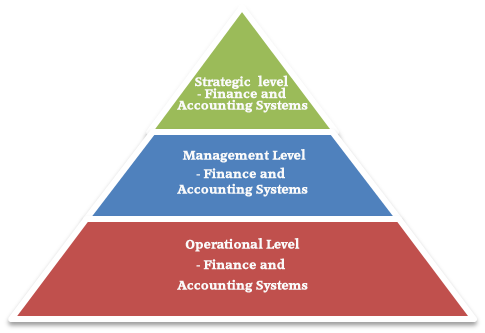The finance function concentrates on managing the firm's financial assets, such as cash, stocks, bonds, real estate and other investments. The goal is to maximize the return on these financial assets. To determine if the firm is getting the best return on its investments, the finance function depends on a considerable amount of information from sources external to the firm.
The accounting function focuses on
maintaining and managing the firm's financial records (e.g.,
receipts, disbursements, depreciation, payroll) to account
for the flow of funds in a firm. After the financial
scandals of early 2000 (e.g., Enron), many government
regulations such as the Sarbanes-Oxley (SOX) Act drive the
accounting practices. F&A systems exist at several levels in
organizations. Operational systems in F&A track the flow of
funds in the firm through transactions such as paychecks,
payments to vendors, securities reports, and receipts. At
the management level, F&A information systems help managers
oversee and control the firm's financial resources.
Strategic-level systems for F&A establish long-term
investment goals for the firm and provide long-range
forecasts of the firm's financial performance. 


